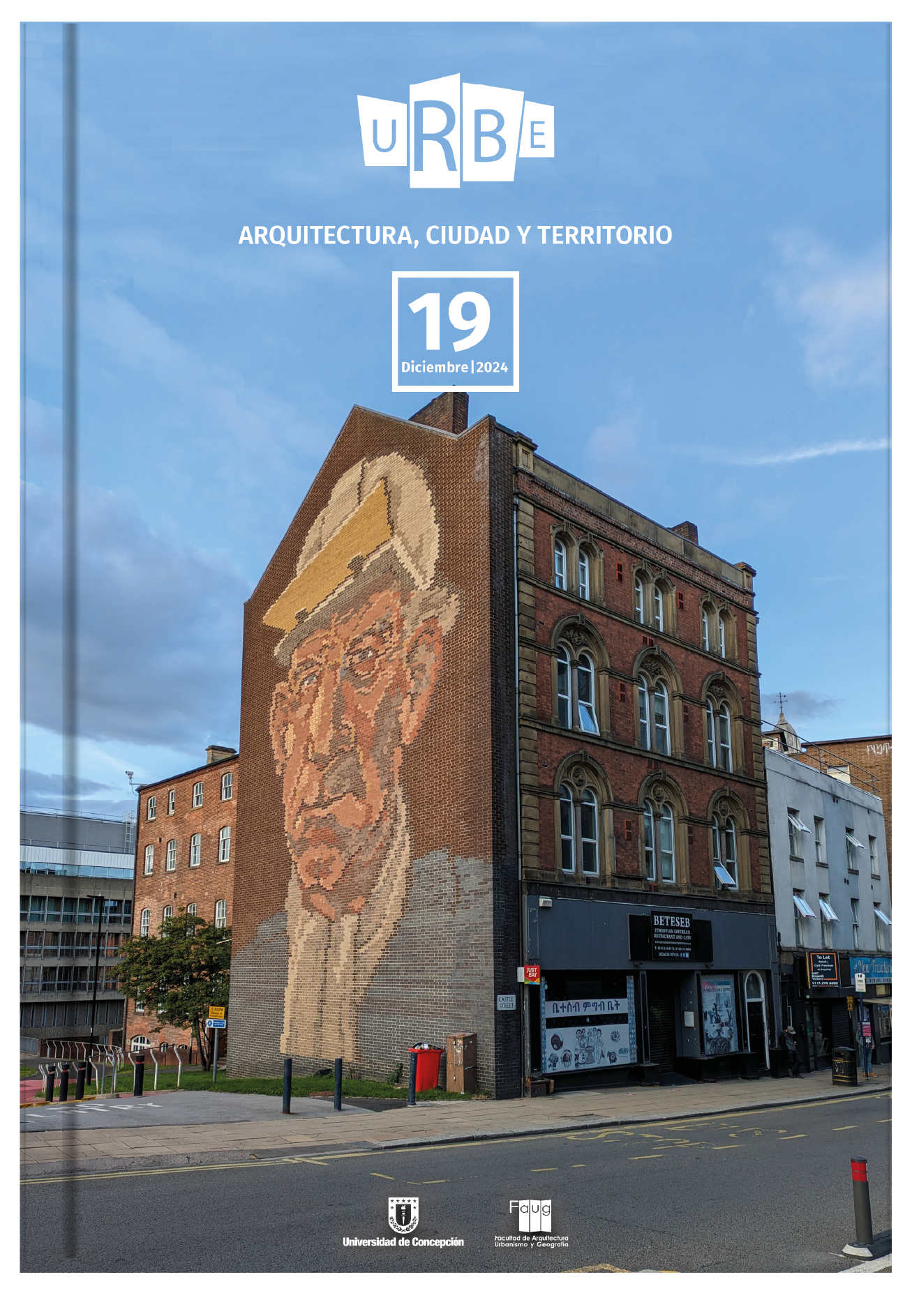The configuration of public space and its impact on homeless people in the center of Concepción, Chile
DOI:
https://doi.org/10.29393/UR19-6CCSA10006Keywords:
public space, urban design, quality of life, homeless people, Concepción, ChileAbstract
This study focuses on the problems of homeless people and their relationship with the configuration of public spaces in the center of the city of Concepción, Chile. It addresses the social and spatial difficulties faced by these people who are often symbolically separated from the general population through a series of prejudices and behaviors despite sharing the same physical space. The research objectives include the identification of focal areas of homeless presence and the differentiation of the different social and design factors that influence the dynamics regarding their lives. The methodology is based on the analysis of the configuration of places where the presence of homeless people is observed and semi-structured interviews with experts related to social services and urban design. The analysis reveals the existence of two key categories of factors that impact the study group: the physical characteristics determined by the design (presence of eaves and protected spaces, location of services) and social and use characteristics (police presence, surveillance cameras, bars). It is hoped that the results will contribute to a deeper understanding of how urban design can influence the lives of homeless people and will lead to future concrete proposals to address this social challenge.
Downloads
References
Ardila, R. (2003). Calidad de vida: una definición integradora. Revista Latinoamericana de psicología, 35(2), 161-164.
Avramov, D. (1995). Sinhogarismo en la Unión Europea: Contexto social y legal de la exclusión de la vivienda en los años noventa. Bruselas: FEANTSA.
Betriu,V. (2022). ¿Arquitectura defensiva, preventiva, hostil o arquitectura tout court? Indemnidad, cálculo y hospitalidad en Jacques Derrida. Inmaterial. Diseño, Arte y Sociedad, 7(13), 98-118.
Bufarini, M. (2020). Percibir y resistir los estigmas. Un estudio sobre la cotidianeidad depersonas en situación de calle. Kamchatka: Revista de Análisis Cultural, 16, 215.
Cabrera, L. P. (2019). ‘Así ocupo un lugar’. Situación de calle y las otras formas de habitar
la ciudad en Chile y Uruguay. Estudios Atacameños, (63), 105-130.
Carr, S. and Francis, M. (2014). Public Space. En: A. Madanipour (Ed.), Routledge Companion to Urban Design (pp. 296-307). Routledge.
Delgado Ruiz, M. (2002). Anonimato y ciudadanía. Mugak. (20).
Di Lori, J., Seidmann, S., Gueglio, C., & Rigueiral, G. (2016). Intervenciones psicosociales con personas en situación de calle: El cuidado como categoría de análisis. Psicoperspectivas, 15(3), 123-134.
Diario de Concepción. (2019, 18 junio). Sepa cómo funcionan los albergues de Concepción. Diario Concepción. https://www.diarioconcepcion.cl/ciudad/2019/06/18/sepa-como-funcionan-los-albergues-de-concepcion.html
Garcia, M. B. (2023, 15 septiembre). Pobreza - desarrollo sostenible. Desarrollo Sostenible. https://www.un.org/sustainabledevelopment/es/poverty/
Giglia, A. (2012). El habitar y la cultura: Perspectivas teóricas y de investigación. Barcelona: Anthropos Editorial.
Hogar de Cristo. (2023, 25 septiembre). Personas en situación de calle. https://www.hogardecristo.cl/personas-en-situacion-de-calle/
Lynch, K. (1960). The image of the city.
Ministerio de Desarrollo Social, Gobierno de Chile. (2023) Política Nacional de calle: una estrategia para la inclusión de las personas en situación de calle.
Ministerio de Desarrollo Social y Familia. (s. f.). Chileatiende - Programa Noche Digna. https://www.chileatiende.gob.cl/fichas/23037-programa-noche-digna
ONU-Habitat. (2009, 23 de mayo). El Radio Caminable. https://onuhabitat.org.mx/index.php/el-radio-caminable
Riquelme, L. C. R. (2019). Ciudades del control y la restricción: las personas sin hogar y la arquitectura hostil. La Razón histórica: revista hispanoamericana de historia de las ideas políticas y sociales, (42), 163-178.
Savi?i?, G. y Savic, S. (2012). Unpleasant Design. CBK, BMUKK.
Vásquez Rocca, A., (2007). El vértigo de la sobremodernidad: “no lugares”, espacios públicos y figuras del anonimato. Nómadas. Critical Journal of Social and Juridical Sciences, 16(2).
La arquitectura hostil: Diseño urbano para desalentar la convivencia. (2019, 24 mayo). Fahrenheit Magazine. https://fahrenheitmagazine.com/arte/arquitectura/la-arquitectura-hostil-diseno-urbano-para-desalentar-la-convivencia
Published
How to Cite
Issue
Section
Copyright (c) 2025 Almendra Saavedra Enriquez

This work is licensed under a Creative Commons Attribution 4.0 International License.
Revista URBE. Arquitectura, Ciudad y Territorio tiene licencia de Creative Commons Attribution 4.0 International (CC BY 4.0) y debe citarse correctamente.









